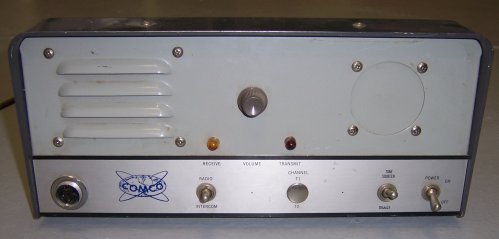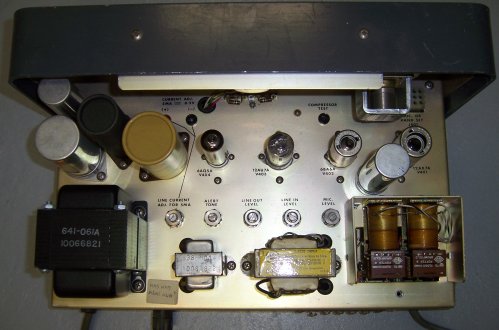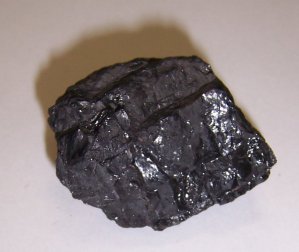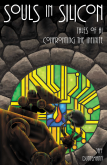- You can anodize titanium to give it a color finish using ordinary household ingredients like Coca Cola and electrons. Lots of electrons. (Alas, I don’t have enough Coke here to dunk my A-12.)
- The more I look at devices like this, the more I feel that it represents the future of high-end mobile computing. I also think it will accelerate the evolution of mobile device UIs, which are not in any shape (currently) to be productive in content creation or editing.
- This seems just, well, nuts to me, but people are using Usenet as a backup mechanism. Just bundle your stuff up in an encrypted binary file and post it to any binary group at all. With Giganews now providing 1300 days (!!) of binary retention, it could work…if you encrypt it strongly enough. (I remember the time when binary retention was six or seven days.)
- Many people have never heard of the “lineman’s splice,” which is way of joining two wires so that the join is in fact stronger than the wire itself. Now that NASA has endorsed the splice, it may see a renaissance. Only one problem: The drawing in the article is wrong. Can you spot the problem?
- I’ve always been a fan of “hi-rails,” which are small railroad vehicles used to run around the trackage looking for damage to rails and ties. Today, as often as not, they’re street pickup trucks with added small liftable flanged wheels, allowing them to operate on both rail and road. In times past, they were often street sedans with big flanged wheels and even cowcatchers. I consider them Dieselpunk, but I’ve never seen them mentioned in SFF.
- Of course, in the Steampunk era (or if your railroad was especially cheap) you had to pedal around the tracks yourself.
- An answer to a question I myself have never thought to ask: Why does it take less milk or cream to lighten iced coffee than hot coffee?
- I don’t even tweet with a keyboard yet, but with an Arduino and my trusty straight key, I’d have a long leg up on tweeting via Morse code.
- This is not the kind of glow-in-the-dark index you want to be high on, trust me.
electronics
Odd Lots
Odd Lots
- For the several people who asked: The odor-free carpet pad that we used in carpeting the lower level here is called Napa Carpet Cushion, from Leggett & Platt.
- Apart from N&P’s Fallen Angels, Bob Tucker’s Ice and Iron, and possibly Mackelworth’s Tiltangle, what other SF novels involve an ice age on Earth in the near(ish) future? I have a concept that capitalizes on all my recent paleoclimate research, and I’d like to see if it’s already been done.
- Whoops, found a list just before posting this. I clearly have some reading to do, assuming I can find any of these items. What are your personal favorites?
- Today’s sunspot number is very close to zero. I haven’t seen sunspot activity this low in some time, and here we are supposedly barreling into the Cycle 24 maximum. The sunspot number is going in the wrong direction. 6M DX is evidently not in my immediate future.
- Joe Flamini and Jack Smith are both pretty sure that the mysterious Comco gizmo I presented in my February 6, 2012 entry is an early remote control unit for commercial and public service radio systems, allowing control of a transmitter or repeater through leased phone lines. More on this in a future entry.
- Having read briefly about hydraulic analog computing in a magazine decades ago, I built hydraulic calculators and computers into the technological background for my novel The Cunning Blood. Turns out the Russians did it on a pretty large scale back in the years running up to WWII. (Thanks to Jim Strickland for the link.)
- From the You-Probably-Couldn’t-Do-That-Today Department: The flipside of the Chad Mitchell Trio’s 1963 hit kid/Christmas 45 “The Marvelous Toy” was “The Bonny Streets of Fyve-I-O, about a colonel who shoots one of his own captains for insubordination.
- Tucows (does anybody even remember Tucows?) is launching a contract-free mobile service using Sprint’s network. The rates are interesting, and favor people who want smartphones but just don’t use them much, and data little or not at all.
- The Maker Shed has a $99 Geiger counter kit that allows logging of pulses through a serial port, and detects both beta and gamma radiation.
- A little gruesome maybe, but it’s real: When we lived in California in the late ’80s, there were reports of sneakers washing up on Santa Cruz area beaches…with human feet still inside them. At the time we assumed drug violence, but there’s a less scurrilous if no less ghastly explanation for a phenomenon that’s still happening. (Thanks to Pete Albrecht for the link.)
- Mmmph. Military combat aircraft should be able to fly in more air than we’re used to, no? Sweden had this problem recently. (I’m guessing that Saab has it too, now.) Thanks to Aki Peltonen for the link.
- The name of my company, Copperwood Media, LLC, was inspired by a set of traces on an old PCB that just happened to look (a little) like a tree. I had an artist draw me a better copper tree for the logo, way back in 2000. Now Rich Rostrom sends a link to the odd tradition in some parts of the UK of hammering coins into cracks in trees until the notion of “copperwood” takes on a whole new meaning.
- Some very nice steampunk watches and jewelry. “Chronambulator” is a great word, whether or not you’ve got a steampunk gizmo to hang it on. Note also the level-reading absinthe hip-flask. (Thanks to Bill Cherepy for the link.)
The Comco Whatchamacallit

I hung yet more Elfa shelves downstairs the other day, on the only remaining blank wall in my peculiar workshop. I’m trying to get stuff off the floor and into some semblance of order. A number of tube-era radios went up on the shelves almost immediately, including a Heath HW-22A and a pair of Ameco TX-62s, one of which is a parts unit. So did something else: the tube-era thingie shown above, which has been following me around for almost twenty years. I bought it at a hamfest in the early ’90s for a dollar. The old guy who sold it to me didn’t know what it was. I bought it for the sake of the transformers inside, which were worth that much even in 1993. It turns on, lights up, and hums softly. I still don’t know what it’s supposed to do.

It’s made by Comco Communications Company, of Coral Gables, Florida. Its model number is 642-RCU. From the “RCU” I’d guess a radio control unit, or remote control unit. It has no RF parts inside. There’s an audio power amp with a 6AQ5A driving a speaker behind the grille. The front panel has a 4-pin PTT mic jack, a momentary action toggle switch marked “RADIO” above and “INTERCOM” below, with “RADIO” the default position. A hole marked “CHANNEL” with “T1” above and “T2” below is plugged. A conventional toggle switch is marked “TONE SQUELCH” above and “DISABLE” below, and beside that, an On/Off toggle switch marked “POWER”. At the center of the panel is a rheostat marked “VOLUME,” and two grain-of-wheat lamps, the orange one labeled “RECEIVE” and the red one “TRANSMIT.” A round hole the size of a panel meter is plugged. On the back panel is a fuse holder, a 5-terminal strip for spade connectors marked “PHONE LINES” and and empty rectangular knockout marked “EXT. CONTROL” from which a cut-off 4-conductor cable protrudes. That might have been a hack; the cut-off cable goes directly to the mic connector.

There are two pin jacks on the chassis (see above, just past the tan electrolytic) that say, “CURRENT ADJ. 5MA == 0.5V”. I’m guessing that the meter was dropped from the product to reduce its cost, and the pin jacks provided for service techs. To their right and a little way over is another pin jack labeled “COMPRESSOR TEST.” No idea on that one.
The tube complement is: 12AX7, 6BA6, 12AU7, 6AQ5A.
I suppose it might be some kind of phone patch, though it doesn’t look like any phone patch I’ve ever seen. The “RADIO / INTERCOM” switch throws me a little, since there’s no external connector for intercom lines. I haven’t traced the tangles under the chassis to any extent yet, so if I don’t know precisely what it does, it’s partly my own fault.
And I have other things to do. Even my voracious curiosity has its limits. If you’ve ever seen one of these or want to hazard a guess, please do!
Odd Lots
- Very cool: a home-made wire stripper that tells you when you’ve cut the insulation precisely as far as necessary.
- I’ve of two minds about the genre of infographics, but this one appears to capture a pretty complicated business in a fairly small space: That fat does not make you fat. (Thanks to Apostle of Eris on LiveJournal for the link.)
- Jim Strickland showed me something startling when I was up in Denver this past Monday: A cylindrical neodymium magnet slowly tumbling as it drifts down a 2′ length of copper pipe. Drop it at the top, and then watch it (against a reasonably bright floor) as it goes. Videos are on YouTube. No mystery; just physics, courtesy Lenz’s Law.
- Also from Jim is a link to some discussion about why McGraw-Hill seems willing to accept $15 iPad-based secondary-ed ebooks instead of $75-a-pop print textbooks. Most of it comes down to eliminating the resale market, and receiving that $15 from every student who ever uses that book. Expect resistance from many quarters, including this one.
- Those who remember the Steeleye Span song “Seven Hundred Elves” from the 70s may be interested to know that it was only the first part of a much longer and much older poem. (Long forum thread; read it all.)
- Here are some peculiar ways to deliver toothpaste, including Crest-flavored pudding and pie filling. No, I don’t understand that one either, unless it falls under the category of “business development.”
- This certainly sounds like a hoax to me, but whether it’s a hoax or not, it might be seed corn for some interesting fiction. (Thanks to Bishop Sam’l Bassett for the link.)
- Read the Wiki piece carefully, and you’ll discover that Graham crackers were invented circa 1829 by a preacher who thought that eating them would discourage masturbation. Oh…ditto corn flakes.
- In conclusion, don’t forget to watch The Puppy Bowl later today! (Football? Wazzat?)
Odd Lots
- Here’s a great site on older toy and hobbyist robots; if you’re a collector or just a nostalgist, it’s a must-see. (Maybe some here have never seen my late 70s robot Cosmo Klein.) Alas, the link came from an old email sent by the late George M. Ewing WA8WTE, who suggested it as an Odd Lot. Better late than never.
- We used to giggle at the name in the mid-60s, but the founder of Blonder-Tongue Labs is still alive, and maintains a site full of interesting tech information about crystal sets and old radios, as well as the firm’s patents and products from long ago. (Thanks to Michael Covington for the link; again, set aside more than a year ago and never used.)
- No tablet here yet (waiting to see what if anything pops up at CES 2012) but I’m tempted to get a Nook Color so I can at least quit reading ebooks on my dinosaur of an X41. My friend Erbo has learned a lot about rooting it and running CyanogenMod, and has much good to say about the combo.
- If you’re considering that step, consider the peculiar nature of the Android OS itself, which may not exist in precisely the same way that Windows exists. This is still good, but you need to understand it, as it’s a newish thing in the computing universe.
- I’ll never buy one of these, but I admire the concept: An off-the-shelf smartphone-controlled video-equipped RC helicopter. And I admit: If it weren’t for OWS I wouldn’t have heard of them at all.
- Henry Law called my attention to the fact that County Down in Northern Ireland is often called “Drumlin Country” because of its landforms. Odd then that “The Star of County Down” is one of my favorite Irish folk songs, and has been since I first heard it circa 2000–which is precisely when I wrote “Drumlin Boiler,” the first tale in the Drumlins Saga.
- And of course, when the starship Origen is marooned in the Drumlins system, it is the mere handful of collectible print books on board that allow the castaways to gradually re-create a modern society on an alien world. The cheap consumer-grade tablet PCs in every passenger pocket were all dead inside of fifteen years (most far sooner than that) and nobody thought to create printing presses before they were gone. No wonder that the cult of the printed book rises as the age of the printed book fades. (Thanks to Bruce Baker for the link.)
- Talk partisan political hatred all the time, and prepare to reap the wind.
- Can we please add “Google is your friend,” “denier,” and “talking points” to this list? (Thanks to Pete Albrecht for the link.)
- And with that, the curtain falls on 2011. May the impact of the curtain give it multiple broken bones, concussions, contusions, internal bleeding, hemorrhoids, the heartbreak of psoriasis, and whatever else it might take to keep this year from darkening our doorsteps ever again.
Coal That Does Conduct

We got 10″ of new snow last night, and it’s still coming down. Given that it’s going to be a winter blunderland out on the streets today, we decided to stay inside and get a few things done closer to home. One of these things was to spend a little time measuring the resistance of coal.
Reader Joe Bryer was good enough to send me eight pounds of coal samples, in two Ziploc bags. One bag was high-quality Pennsylvania anthracite. The other was bituminous, its origins unspecified. To take the measurements, I made a jig out of a piece of scrap plastic. I drilled two .0785 holes a quarter inch apart. The distance was arbitrary. (The size of the holes is that of standard probe tips.) The idea was simply to make all measurements with the same distance between the probes.
I measured several spots on five pieces of bituminous, and in all cases the resistance was higher than my DVM’s top reading of 20 megohms. The anthracite was a completely different story. The resistance varied from place to place on any given sample, and varied widely even on a single sample. The highest readings I got were in the vicinity of 180K ohms. The lowest was 12K. I wiped the samples with a dry rag prior to testing them.
This is promising. The 1/4″ spacing between the probes was not quite arbitrary. The carbon button microphone element in an old-style telephone is about 1/4″ in size. I have several of those in the drawer and all of them tested at between 5K ohms and 10K, depending on how you orient the element, and whether you tap it with a screwdriver. It is, after all, just a little container of small carbon grains. So I think it would be worthwhile sifting some sand-sized granules of anthracite and trying them in a mic element lashup.
Joe Bryer pointed out something I hadn’t known: Bituminous and softer coals like lignite and peat are sedimentary rocks, whereas anthracite is metamorphic rock. Pressure and heat can break down some of the long carbon chains and ring hydrocarbons of which coal is made and free up the carbon, which can then, in a dense enough fragment, conduct electricity. Hydrocarbons, even very dense ones, don’t conduct electricity and many are very good insulators. Graphite, which conducts electricity very well, might be considered the highest grade of coal, or at least the variety most affected by heat and pressure underground. (It isn’t burned as fuel because it’s not common compared to coal and very difficult to ignite.)
The next thing to test is carbon from barbecue briquettes, which I will have to beg from friends since I no longer burn charcoal for grilling. If I can find some of the drafting pencil leads I used in drafting class umpty years ago, I’m going to grind them up and test them as well. (My friend Joe Flamini W4BXG says that he’s done that himself.) In the meantime, I have a place to start, and will now set my mind to building a microphone lashup to test conductive particles in. More as I manage it.
Coal That Doesn’t Conduct
 My friend George Ott surprised me with a lump of coal yesterday morning, after church over at St. Raphael’s. He even wrapped it and put a ribbon on it! I could barely stand the wait to get home and check its resistance. And (drum roll, please) the lump is…an insulator.
My friend George Ott surprised me with a lump of coal yesterday morning, after church over at St. Raphael’s. He even wrapped it and put a ribbon on it! I could barely stand the wait to get home and check its resistance. And (drum roll, please) the lump is…an insulator.
Or a damned reasonable facsimile. With my DVM set on its 20 megohm scale, the resistance didn’t read at all, even with the probes set pretty firmly in the coal about an eighth of an inch apart. I tested at eight or ten different points on the lump, since carbon is funny stuff generally and coal is not a uniform substance. The DVM reads a 10 megohm resistor right on the money, and failed to read a 22 megohm unit. I use that DVM a lot and certainly haven’t seen anything wrong with it. But no matter how close I set the probes, I got no reading at all.
I put the lump against my belt sander and ground a flat face, which was interesting in terms of the tarry smell that came off the lump. No difference. I whacked a corner off the lump with a coal chisel. No difference, even on the fresh and very shiny fracture face. With the clean and very sharp points of the probes no more than a sixteenth of an inch apart, the resistance was higher than 20 megs. Wow.
I’m not enough of a rockhound to know what sort of coal it is, and George didn’t know either. (He got it from a blacksmith who fires his forge with coal.) It looks like anthracite in that it’s quite shiny, but beyond that I just don’t know.
Another of my readers is sending me a sample of both anthracite and bituminous, and that may help. Some of the online sources I’ve read describe coal as a semiconductor, but I think by that they only mean a substance with significant resistance. I’ve seen nothing to indicate that some types of coal would be insulators across very small fractions of an inch.
However, among other projects I hope to get to this winter is a crystal detector lashup, steampunk style, on an oak base with a copper pipe cap to hold a mineral sample for testing as a cat-whisker detector. One doesn’t think of coal as a candidate, but it certainly won’t take much work to do the science!
I Want a Piece of Anthracite for Christmas…
Yes, I want a lump of coal for Christmas. Two actually: Santa, if you’re listening, see if you can get me four or five ounces of a good glossy anthracite, and a similar quantity of mid-grade bituminous. I’m not sure where else I’m likely to find it. (Ok, ok, eBay. Last resort…)
I haven’t been bad. I’ve been curious.
A question occurred to me the other day while I was hauling boxes around the lower level: Does coal conduct electricity? And if so, how well? I know that carbon does, but of course you have to specify which kind of carbon. Diamonds do not conduct electricity. Carol’s engagement ring is big enough for me to have put an ohmmeter across its large facet thirty-odd years ago. The carbon rods running down the centers of conventional carbon-zinc batteries conduct very well. Mechanical-pencil lead conducts electricity. Resistors, in fact, were basically painted lengths of pencil lead until relatively recently.
Coal, now. Hmmm. I would run downstairs and do the science right this minute, but I’m not sure I’ve held a piece of coal in my hand for forty years. Uncle Joe Labuda burned anthracite in a coal stove to heat his flat down Back of the Yards around 1960. I was fascinated by the lumps of coal in the bin behind his stove for their luster and even more by their smell, which was a less acrid form of the coal smoke that hovered over the neighborhood all winter, at least until people started installing natural gas space heaters.
Online research suggests that the resistance measured across the thickness of a one-centimeter cube of anthracite runs from the mid-hundreds to low thousands of ohms. That suggests that sand-grain sized particles of coal could be used to create a carbon button microphone. My friend Art Krumrey actually did this circa 1963, by beating on a carbon rod yanked out of a dead flashlight battery, and loading the grains between a soda bottle cap and half of one of the thin steel puck-shaped containers that large rolls of Scotch tape used to come in. He basically duplicated the circuitry of a primordial telephone connection, and we sent our voices over fifty feet of wire without any active devices at all, just a few dry cells in series with the cobbled-up carbon mic and a pair of dynamic headphones. It was boggling how loud the audio was, so loud that it overloaded the headset unless we spoke in practically a whisper.
This was how telephone systems worked before amplifier tubes were invented: The voice audio signal coming out of the carbon mic was already high-level, being a variable resistance in series with a high-current power source. In fact, electromechanical repeater amplifiers were created by mechanically coupling a dynamic earpiece to a carbon button mic. With decent batteries to drive the system, repeater chains like that could carry voice signals hundreds of miles without a vacuum tube in sight.
What I really want to know is whether a steampunk-era garage inventor could have created a usable carbon button mic using granules of coal, of if purer carbon would be required. If I can find a lump of coke that might work better, and turning coal to coke is not exactly alchemy. (I’m not sure I want to do it myself.) If the resistance of a lump of good anthracite were low enough, it could also function as the cathode of a carbon-zinc primary battery, which would be interesting all by itself. Water-cooled carbon mics the size of pie pans were used in series with high-speed alternators to generate voice-modulated RF before the advent of RF power tubes. It’s a delicious steampunkish concept, full of sparks and ozone and odd things turning too quickly for their own good.
Of course, I have a Drumlins World story concept that involves simple electromechanical wireless voice transmission systems. The sinister Bitspace Institute has a very secret radio communications network, and when a pair of spindly teenage boys independently invent spark radio, well, interesting things happen–especially when you throw a few drumlins into the mix.
Still taking notes, but even a few ounces of good coal could make for some interesting experiments, just as my steampunk Geiger counter did last year. Once the lower level is done I hope to lash something up to measure the effectiveness of different kinds of carbon granules in microphone service. Whether the story itself gets written or not, I expect to learn something, and that’s good enough for me.
Odd Lots
- The Big Honking Sliding Puzzle Project continues, and today Carol and I are mostly stuffing boxes downstairs. Mover guys coming Tuesday. The carpeting is coming out on Wednesday, and the plastic tarps will go up. Thursday they drill holes in the slab and start pumping gooey stuff underneath to stabilize the soil and raise the slab to where it originally was. We are shopping for new carpeting, and will begin choosing new paint colors tomorrow morning. The lower level will not be back in livable shape until mid-January, but when it is it will be much improved.
- I do not do walled gardens. I absolutely do not do walled gardens. This gentleman from Harvard Law School has done a good job capturing my unease with vendor-controlled hardware and especially software.
- Reader Nick DeSmith sends a pointer to a wonderful site on numeric-readout vacuum tubes of various species, from humdrum nixies to one I had never heard of before: A Compactron-based micro-CRT with ten guns. I consider Nixies at least to be steampunk-possible, since there’s no physics involved that wasn’t understood in 1900. Not sure they’ve been used in the steampunk canon so far; if they have, let me know.
- There were giant beavers during the Pleistocene. There have been talking beavers on TV in the past, though they weren’t all that huge. Now there’s an angry giant beaver. Don’t piss one off unless you’re wearing the right overalls.
- I’ll meet your giant, jeans-eating beaver and raise you a giant cricket so big it eats carrots! (Thanks to Esther Schindler for the link.)
- If giant beavers or giant crickets aren’t your passion, how about miniature forests of old-growth moss that may be thousands of years old? Such are found in Antactica, and by spotting nuclear test fallout debris along the length of their stalks, we can see how slowly they grow. Think, slow. (Thanks to Frank Glover for the link.)
- I keep tools and even a wi-fi bridge node in ammo cans. Why not wine?
- The many faces of Superman. (Thanks once again to Frank Glover for the link.)
- This has some steampunk resonance, but (oldster that I am; how old were you in 1966?) I keep hearing an endless loop in the back of my head: “Batfan! Batfan! Batfan, Batfan, Batfan. Na na na na na na na na na na Batfan!”
Odd Lots
- Michael S. Hart, founder of Project Gutenberg and generally acknowledged as the inventor of the ebook, has left us. He was only 64.
- That supernova that popped up in M101 about ten days ago keeps getting brighter, and the 8″ scope is out in the garage, collimated and ready to roll. I have never seen a supernova (mostly because I’ve never hunted for the pikers that have appeared in my lifetime) but this is starting to look too good to miss. Brightness should peak in the next few days, and if the clouds would break here for an evening I think it would be reasonably easy to spot.
- White dwarf stars may be able to exceed the Chandrasekahr Limit by spinning rapidly–and as soon as their rotation slows down sufficiently, they collapse and go supernova. Such stars may be more common than we think, and offer a cool SF gimmick for galaxy-level warfare: Subtract a little rotational energy from a super-Chandrasekar white dwarf, and wham! Supernova-on-demand.
- An earlier article from the same site suggests that such spinning white dwarfs may be messing up a long-established luminosity heuristic for measuring the distance to far-off galaxies. If all similar white dwarf stars collapse and blow up at the same mass, their luminosity may be assumed to be about the same. If more massive stars can delay their destruction by absorbing angular momentum along with accreted mass, the metric fails.
- Getting uranium out of groundwater is a good thing–and when you’re done, you still have the uranium. (In my view, uranium is just as useful as clean water.) I energetically wonder if this process can be generalized. If so, then anyone could become The Man Who Ploughed the Sea.
- Damn, I’ll believe it when I see it, and if I actually see it I may not in fact believe it, but Heathkit is going back into the kit business!
- I’ve never seen this before and I doubt you have either: A razor-sharp composite photo of the Moon’s north pole.
- From whence the above: I could do with more science and less Science Guy, but if you don’t visit NASA Goddard’s Flickr photostream regularly, you are missing out bigtime. (Site virgins, prepare to lose an afternoon…)
- T’hell with home theater: If this thing is quiet, it could be a spectacular desktop for office apps. (Alas, I see no published spec on how loud it is or isn’t.)
- If more ties like this were available, I might wear ties more. (Especially the, er, cable tie.)
- Back in 1948, Bell Labs polled their staff to decide on a name for what may be their most potent invention. Also-rans include the solid triode, crystal triode, and (my favorite) the Tom-Swiftish iotatron. That’s just so much cooler than “transistor.”
- Hmmm. It seems that Yale scientists may be offering me the choice between being a bald head and a fat head. I may stay where I am.
- But, Miles, it’s full of… marshmallows !










